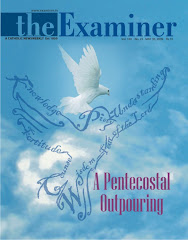A model catechist could be summed up as one who teaches, intervenes and accompanies the catechumen. In Mark’s Gospel, Jesus seems to be distancing himself with His mother as He says, ‘who are my mother and my brothers.’ (Mk 3:33) In fact, Jesus is asserting the catechetical role of Mary by saying, ‘whoever does the will of God is my brother and sister and mother.’ (Mk 3:35) This verse could be elucidated as ‘whoever lives out my catechism is my brother and sister and mother.’
Mary – The First Catechist
One cannot deny the fact that like all mothers Mary was the first to teach little Jesus. In that little house of Nazareth began the home catechesis of the Son of God. We could visualize Mary teaching the little Jesus about God’s love. At home began Christianity’s first catechism lesson by the first catechist, Mary. We have St. Paul writing to the Philippians:
‘Let the same mind be in you that was in Christ Jesus, who, though he was in the form of God, did not regard equality with God as something to be exploited, but emptied himself taking the form of a slave, being born in human likeness. And being found in human form, he humbled himself and became obedient to the point of death – even on a cross.’ (Phil 2:5-8)
Jesus humbly learnt His first catechism lessons from His paragon catechist, Mary. Mary is not just a theoretical catechist but very realistic in her approach.
Mary – A Catechist who Intervenes
Mary is a catechist who intervenes in the life of Jesus. In John’s Gospel after apprising Jesus about the lack of wine (Jn 2:3), Mary instructs the servants with complete confidence, ‘Do whatever he tells you.’ (Jn 2:5) She believes in practical catechesis. This characteristic of intervening in the life of the catechumen is of utmost importance. Like Mary, every catechist has a task to intervene in the day-to-day life of the catechumens, to help them live their Christian lives to the fullest.
Mary always accompanied Jesus even in His passion, death and resurrection. She was there present at the foot of the cross (John 19:25). Mary was also present with the apostles in the upper room after the ascension of Jesus into heaven, ‘all were constantly devoting themselves to prayer, together with certain women, including Mary the mother of Jesus.’ (Acts 1:14) Mary is a catechist who accompanies her children in all circumstances of life. All catechists have a vital message from Mary, to accompany the catechumen in their life journey.
Mary – Our Model Catechist
Jesus has entrusted His best catechist while he was hanging on the cross. Jesus tells John, ‘Here is your mother.’ (Jn 19:27) From that moment Mary becomes our Mother, our catechist. A motherly catechist, who teaches her child, intervenes and accompanies her/him through his/her life journey. Mary, our model catechist enlightens us with God’s love manifested in the catechism of the Catholic Church.
Article published in 'The Examiner', 5th September, 2009 (Vol 160, No 36)

.jpg)